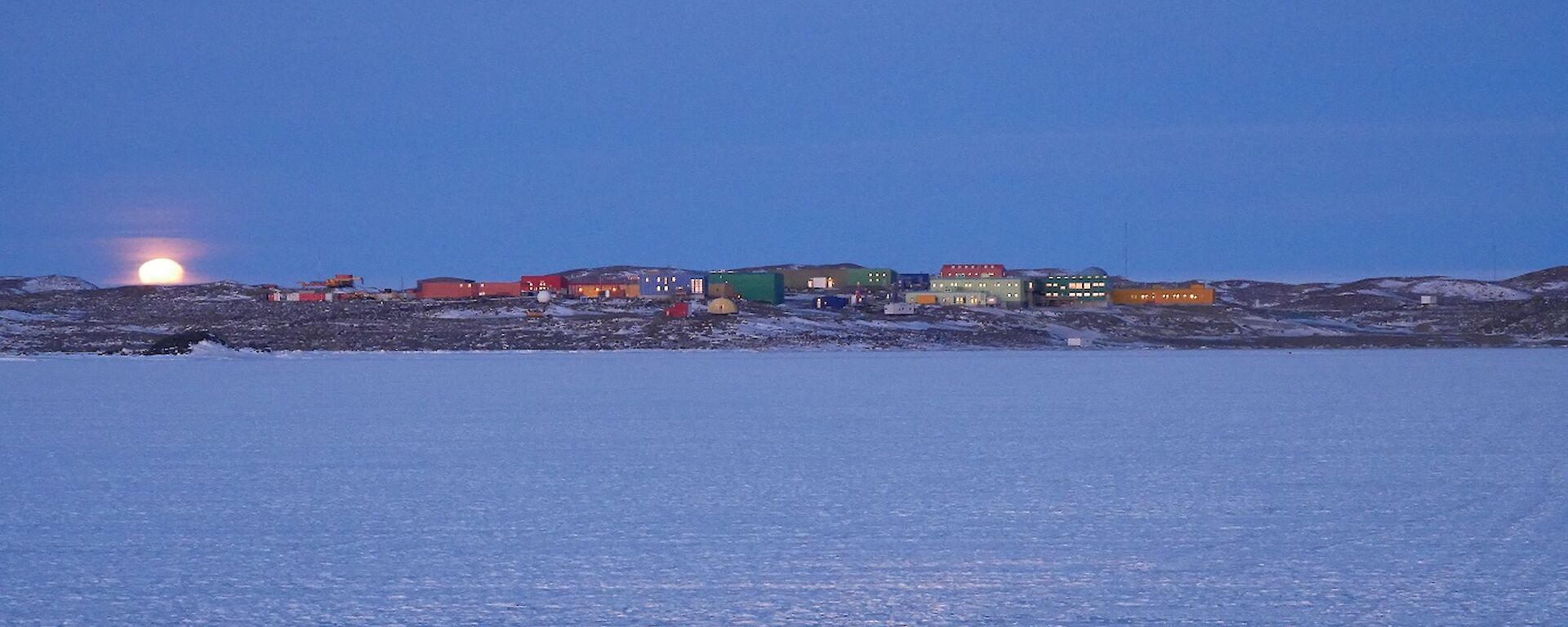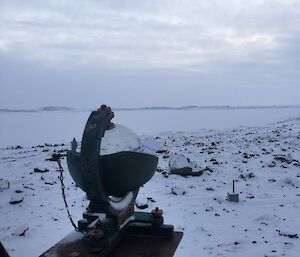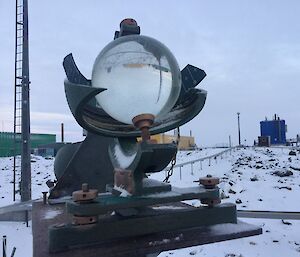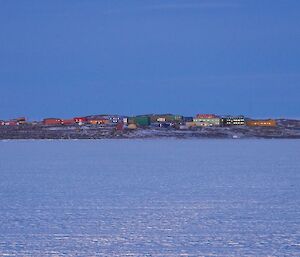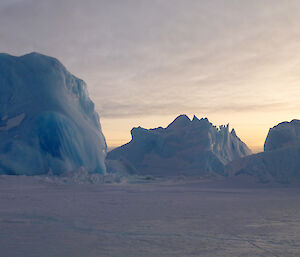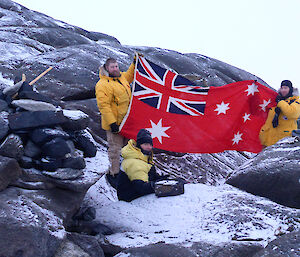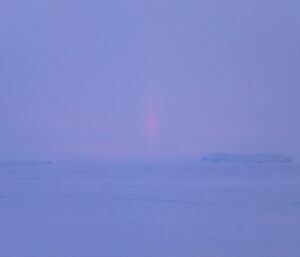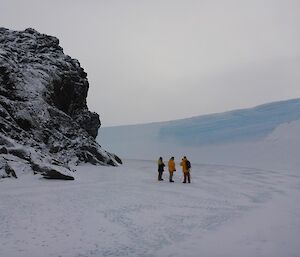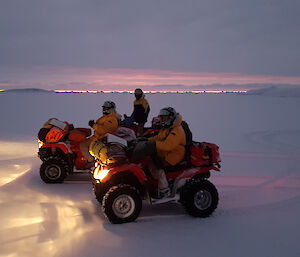While those on station were eagerly awaiting the arrival of the sun on July 10th a group of 4 (Glen, Simon, Derryn and myself) mounted an expedition to search for it further afield. Bandits Hut was to be our base for two nights. We had a most enjoyable ride out on the 8th, meandering leisurely amongst the icebergs. Each berg is majestic and unique, and you could easily admire them for days without getting bored.
Another group of four thought they would get the drop on us and see the sun a day or two earlier from the elevated vantage point of Woop Woop, the location of the summer ice runway. While they were thwarted on this account by cloud, they were highly successful on their primary mission which was to bring a couple of groomers back to station for servicing. It was a novel sight seeing their procession of headlights coming down off the plateau on the morning of the 9th.
The 9th saw us exploring the northern limits of our known universe, the edge of our station operating area. We visited Sir Hubert Wilkins Cairn at Walkabout Rocks, looped around Wyatt Earp Islands, and dropped in to Mikkelsen’s Cairn. There is a cache at Sir Hubert Wilkins Cairn that still contains an Australian flag and a copy of the Australian geographical magazine Walkabout, deposited there by the intrepid Wilkins in 1939 to reassert Australia’s claim on the region. Wyatt Earp Islands are named after the ship Wilkins was travelling on. There is still a weathered wooden flagpole at Mikkelsen’s Cairn, erected by Captain Klarius Mikkelsen of the Norwegian whaling ship Thorshavn in 1935. Mikkelsen was accompanied by his wife Caroline, one of the first women to set foot in Antarctica. Mikkelsen also gave the Vestfold Hills their name. We thought we might get a cheeky sneak peak of the sun a day early, but there was too much cloud about. The upside to the cloud was the lovely light dusting of snow. We did spot a glimpse of what could have been a solar pillar, suggesting that the sun was indeed eager to return!
Alas it was again too cloudy on the 10th to be able to greet the sun. We still optimistically wandered a short way onto the Antarctic Plateau along the route to Woop Woop and climbed a small hill. The views were spectacular, the cloud and snow covered landscape adding to the atmosphere. We explored a massive wind scour, a crescent-shaped area free of snow on the windward side of a hill, carved out by howling winds. Even though the sun was not sighted, we had a most enjoyable, relaxing and interesting trip. And we were treated to a red sunset sky silhouetted by icebergs on our return to station.
J. Davey

